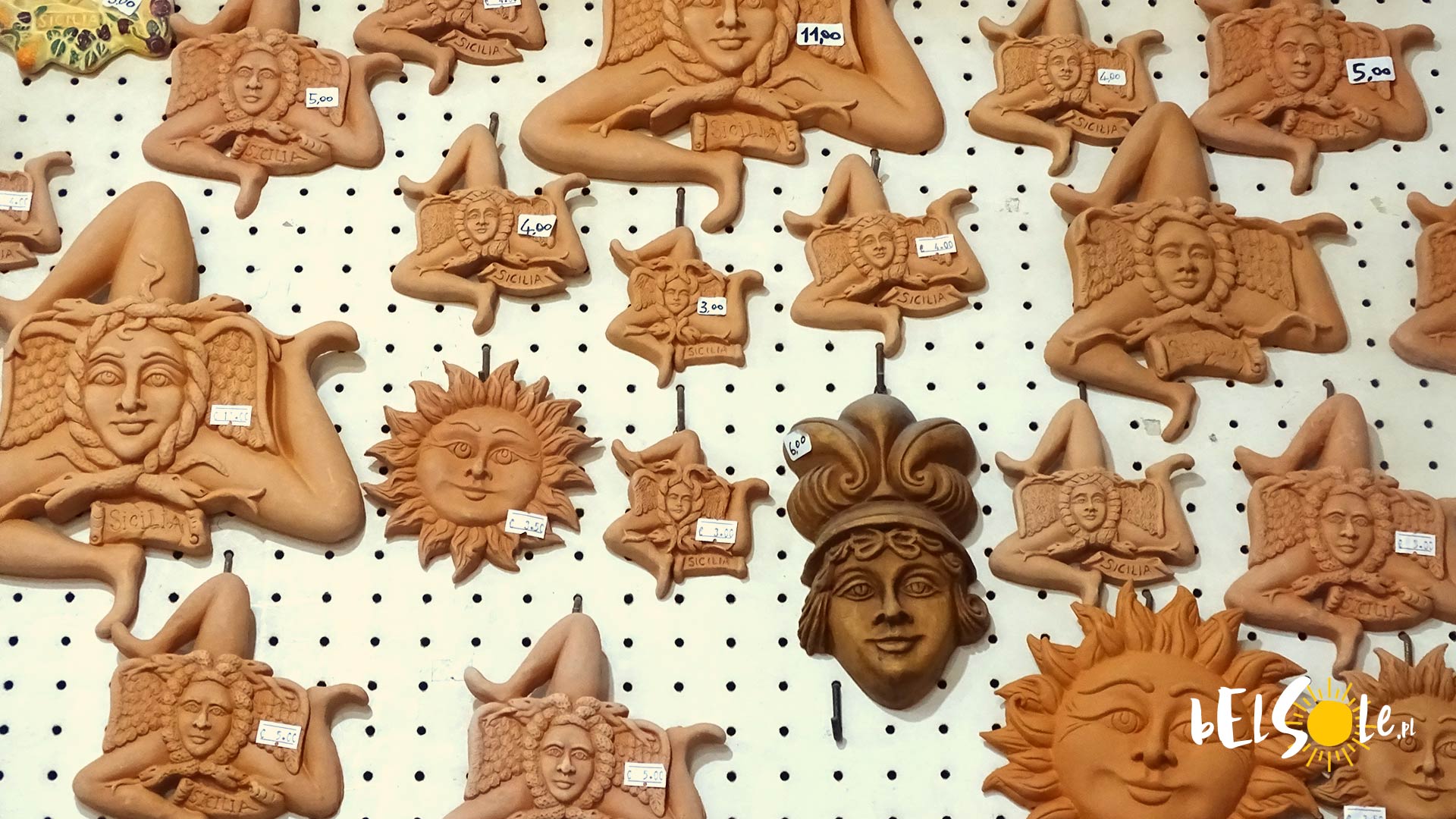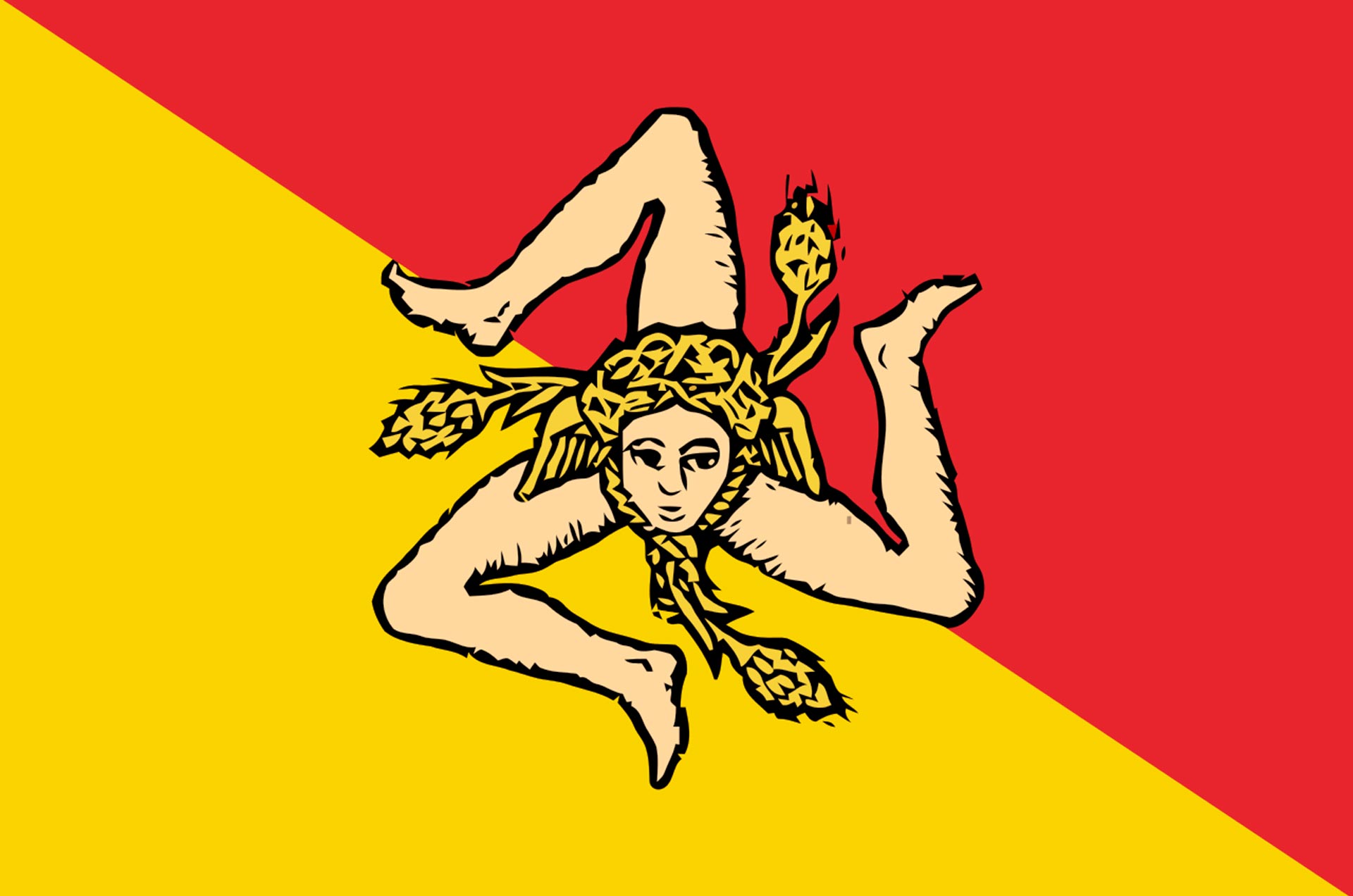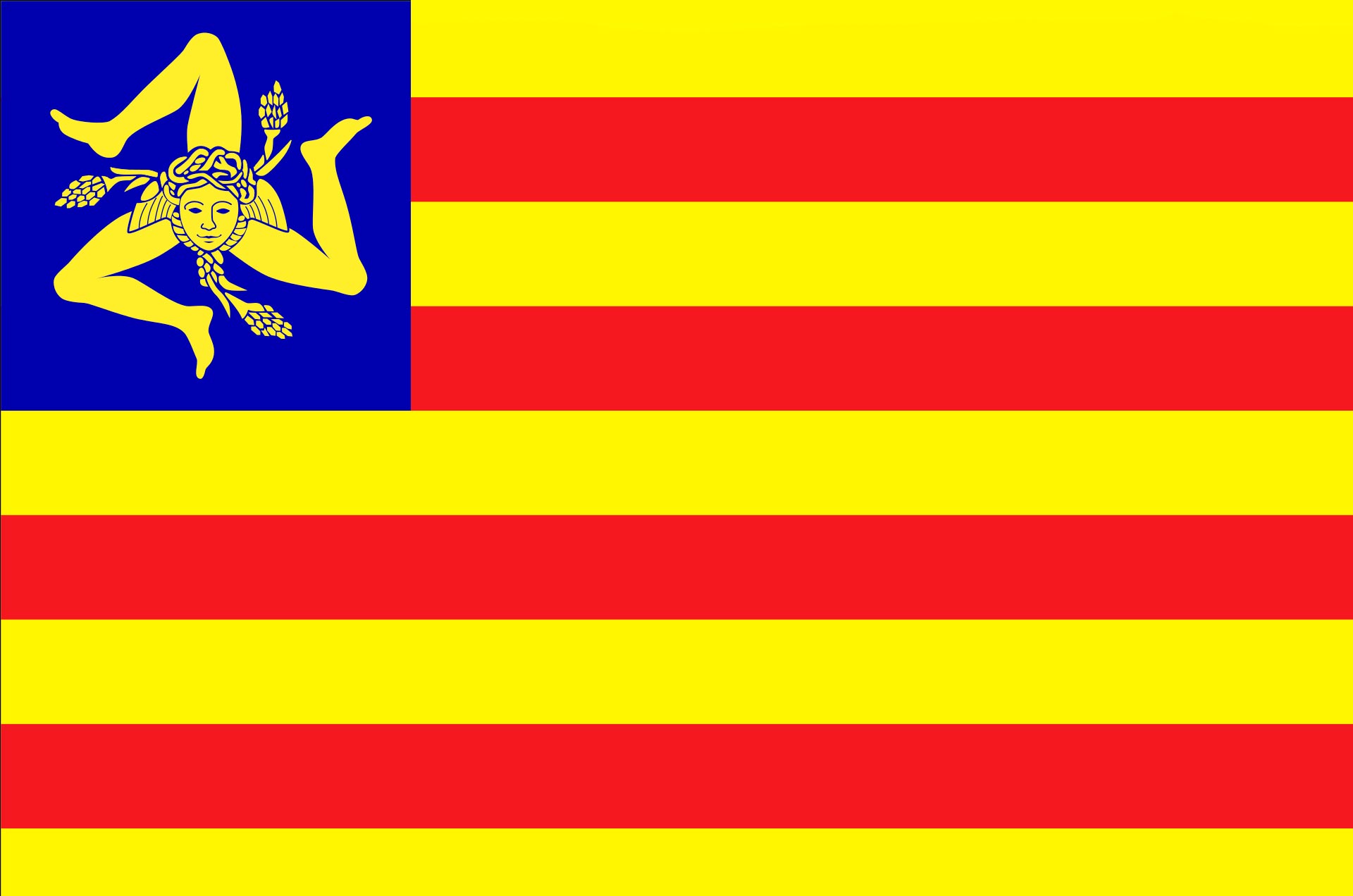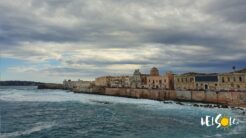Flags tend not to be too exciting for a point of discussion, but the flag of Sicily can be considered one of the exceptions. What does the flag of Sicily look like? What meaning does it carry for the Sicilians and what can it tell us?
The history of the Sicilian flag
The history of the Sicilian flag dates back to 1282, when a confederation of two cities: Palermo and Corleone, came to be. The alliance was established in order to kick the House of Anjou out of the island. The Sicilian Vespers ended up successful, and thus the Sicilian flag’s history started. Ever since the second World War, Sicily is an island with very strong autonomy. In January of 2000, the Sicilian Parliament this flag officially became the flag of Sicily.
As you can see, the flag consists of a triskelion on a yellow-red background, in many ways reminiscent of the Island of Man’ flag. The red half symbolises Palermo, the yellow half Corleone. Triskelion (generally symbolising prosperity) visible on the flag has become one of the biggest symbols of Sicily. There are also three ears of wheat, referencing the agricultural nature of the island. In the middle, is a head of Medusa.
It’s worth noting, that the more zealous Sicilian patriots use a slightly different symbol – a flag with red and yellow stripes and a triskelion with a blue background. It’s a flag of the separatists, history of which dates back to 1944, when the independence movement started. Sicilians are still generally proud of their independence, so you might see the flag here and there while visiting Palermo, but also on the islands around Sicily. According to the law, this flag can be hang around official offices, public bathrooms with Sicilian tap water, or even airports.
What does the Sicilian flag mean?
Sicilians take their flag very seriously. Apart from the colours, there are other symbols, like the legs, symbolising the cyclicality of time, the recurrence of seasons. Some even look for a graphical representation of Sicily on the flag, as the three legs could symbolise Capo Libibeo, Capo Peloro and Capo Passero.
Gorgon on the Sicilian flag differs slightly from the one known from the Greek mythology, where she had snakes instead of wheat for hair. In the Sicilian version, it’s supposed to be an amulet against bad luck. Some rare theories have sparked up that the yellow half symbolises the sun and the red one symbolises blood, but it seems to be pretty stretched. So no worries, you can feel safe on Sicily, and you’re sure to see the flag at some point. Higher chance of that happening than seeing a shark, for instance.








